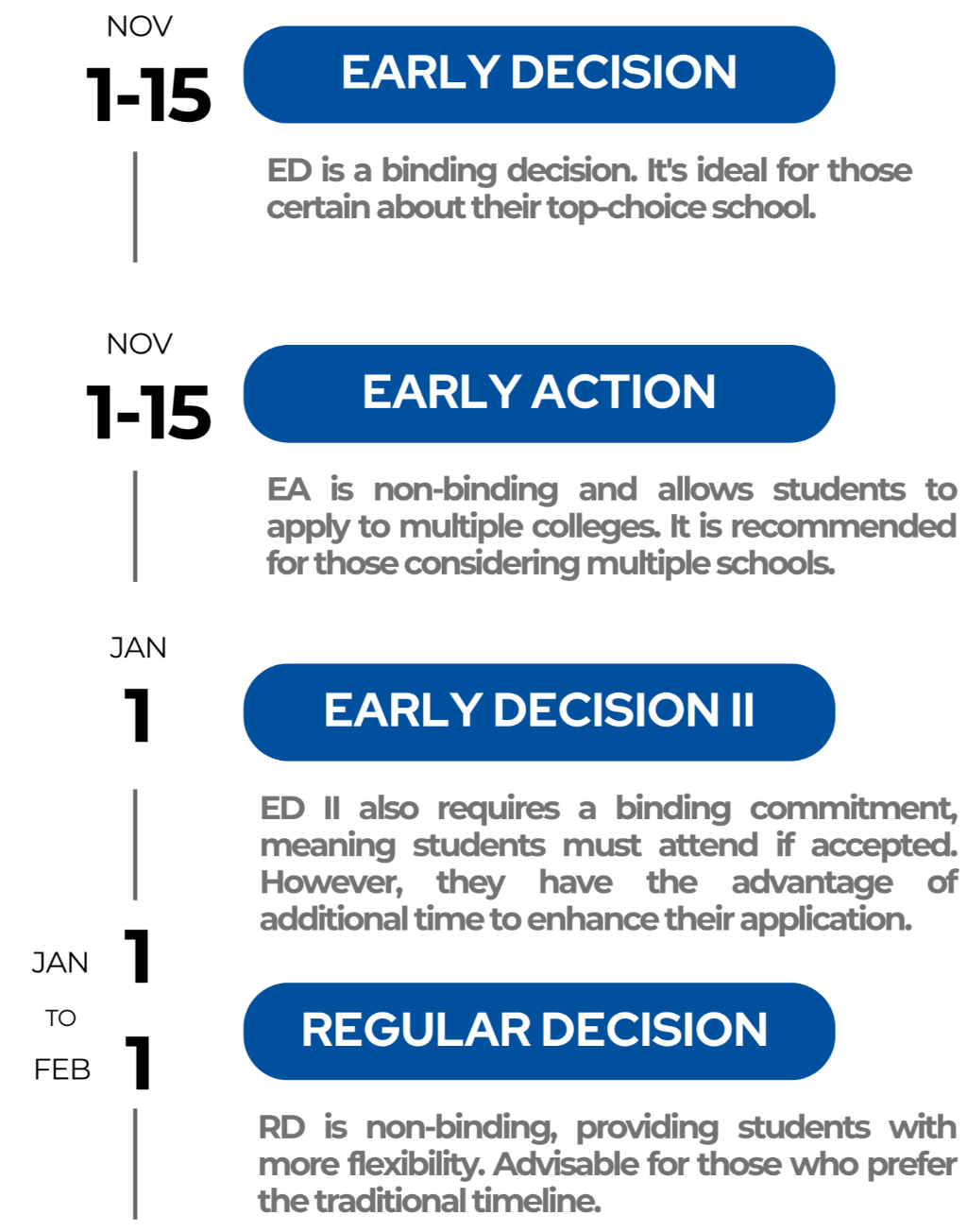Around 450 colleges offer early admission plans, enabling students to apply well before the regular deadline and receive an early decision. This approach often enhances students' chances of acceptance compared to the regular admission process, while also benefiting colleges by securing early commitments from committed applicants. In this blog, we'll explore common concerns about early applications, the pros and cons, and guide you through the early application process with confidence.
Understanding Early Decision vs Early Action and the Pros and Cons

Earl Decision (ED)
Early decision involves applying to one college earlier than the regular deadline, typically in November. If accepted, students commit to attending that college and receive their decision by December. This application type is binding, meaning students cannot apply to other colleges. It's ideal for those certain about their top-choice school, but careful research and meeting admission requirements are essential.
Students needing more time to strengthen their application should wait to avoid potential rejection and a barred reapplication until the next year. While not suitable for those requiring financial aid, it's viable for students without financial concerns.
Pros of Early Decision:
Students gain early confirmation of admission to their preferred college, enabling them to explore alternative options before regular decision or early action deadlines. Secondly, it alleviates the stress and uncertainty of college admissions early on. Additionally, it affords students extra time for logistical planning, such as relocation and class scheduling. Finally, applying within a smaller applicant pool may enhance one's chances of acceptance.
Cons of Early Decision:
Early decision applications come with several disadvantages. Firstly, students who rely on financial aid may find it challenging to compare offers, as colleges typically don't provide comprehensive financial aid packages early on. Secondly, students might regret their decision if they change their minds later. Additionally, there's a risk of rejection during early decision if application materials are weaker. Lastly, students are required to submit nonrefundable deposits earlier, adding financial pressure.
Early Action (EA)
Early action allows students to apply to multiple colleges by December, receiving admissions decisions by January or February, ahead of regular decision applicants. Unlike early decision, it's non-binding, offering students flexibility to compare financial aid offers. It is recommended for those seeking options, even if they have a top choice, as early action may lead to scholarship or financial aid offers, aiding negotiation for better terms at their preferred college.
Pros of Early Action:
In early action applications, students gain extended time to assess eligibility for scholarships, financial aid, and student loans, even leveraging offers from different colleges to negotiate better packages. Admission decisions are received in January or February, alleviating the stress of waiting until April like regular decision applicants. Additionally, early action streamlines the application process, allowing students to tackle admission decisions earlier, offering a sense of relief and certainty sooner in the college application journey.
Cons of Early Action:
With a shorter application window, there's less time to perfect application materials, which may lead to submissions that aren't as polished. Additionally, students risk their chances of admission to their preferred colleges if their application materials aren't strong enough, particularly if they need more time to improve their grades and test scores.
College Application Deadlines
ED vs EA vs ED II vs RD



